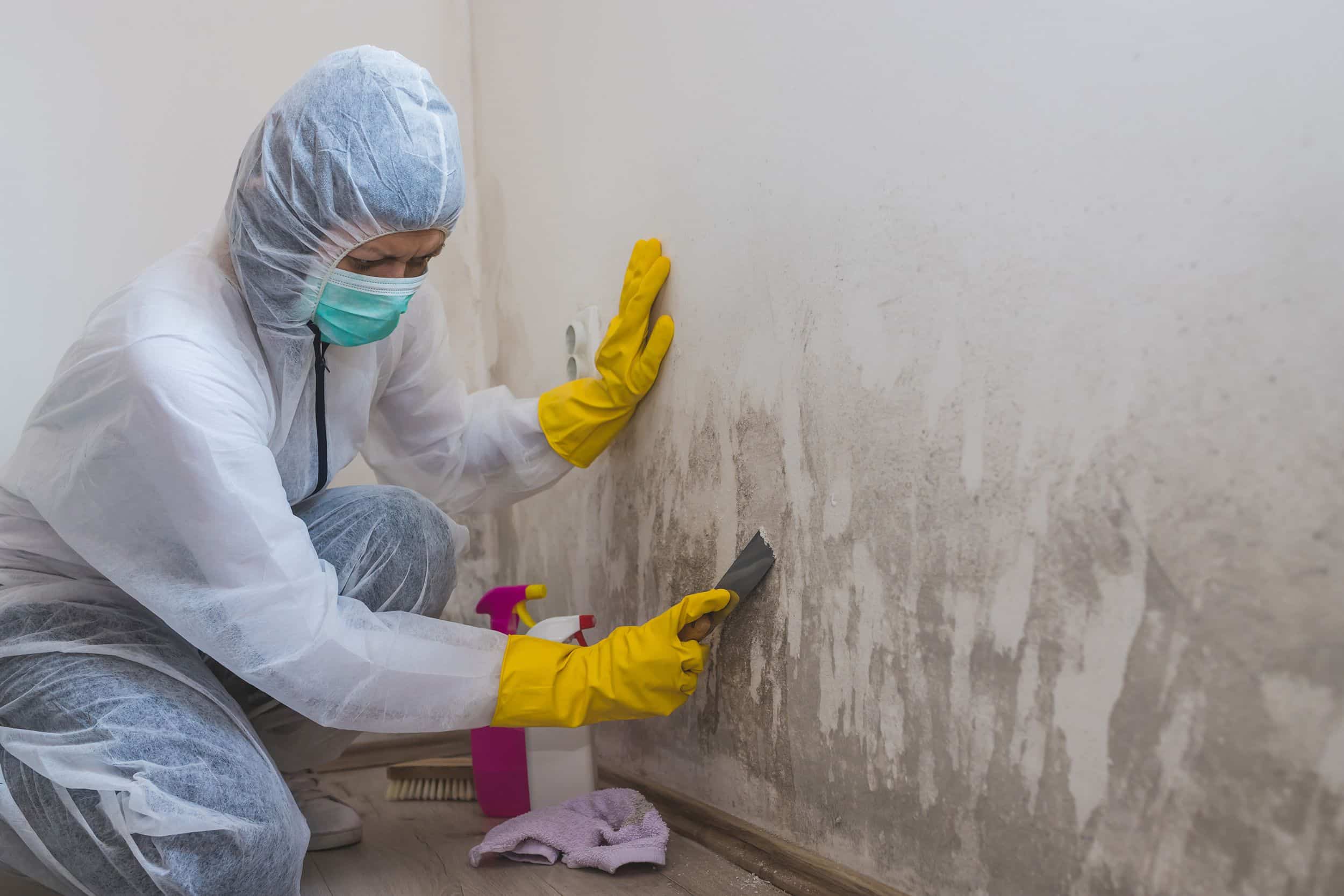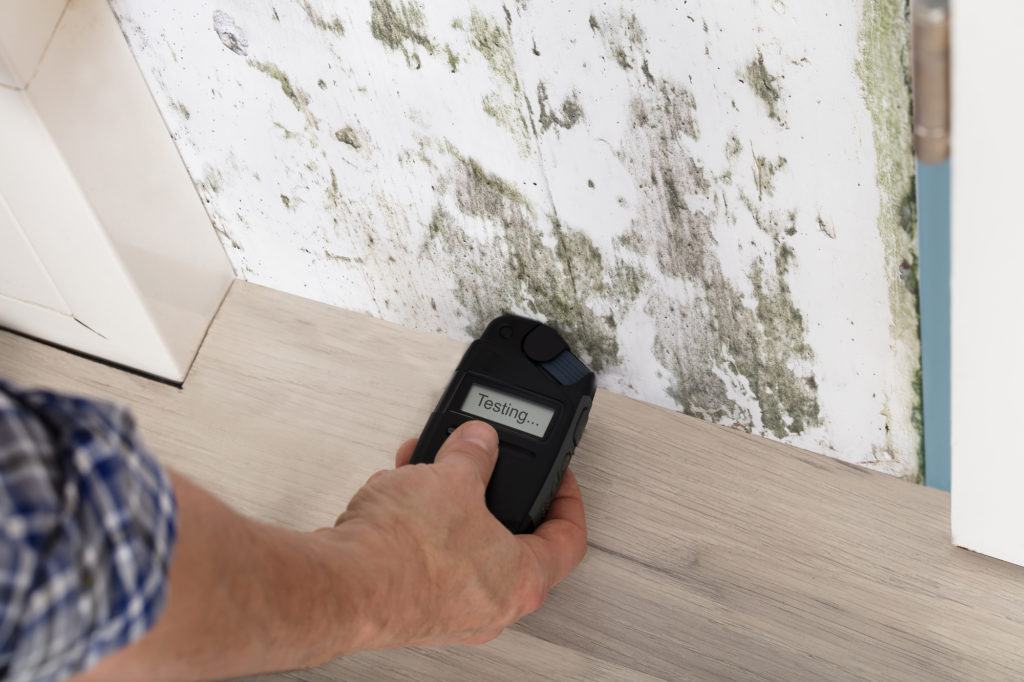Testing Air Quality After Mold Remediation
Wiki Article
Trick Tips for Effective Blog Post Mold And Mildew Removal
Resolving mold and mildew concerns in a prompt and efficient way is important for preserving a healthy indoor environment. Efficiently finishing mold and mildew removal is a diverse process that needs attention to information and adherence to details methods. From evaluating dealt with areas to executing moisture control actions, each action plays an essential duty in ensuring the efficiency of the removal procedure. Nevertheless, there are essential post-remediation steps that are equally vital yet commonly ignored. These actions not only validate the success of the removal initiatives but also add to stopping future mold and mildew growth.Inspection of Treated Locations
Upon completion of the mold and mildew removal process, an extensive evaluation of the treated areas is essential to make certain the effectiveness of the removal efforts. This inspection functions as an important action in the post-remediation phase to verify that the mold removal and cleanup treatments achieved success in getting rid of the mold and mildew invasion and recovering a risk-free indoor atmosphere. The assessment must be conducted by certified specialists who have the experience to assess the remediated areas thoroughly.Throughout the examination, various factors are assessed to figure out the success of the removal procedure. These consist of aesthetic evaluations to examine for any kind of signs of mold growth or water damage, moisture levels to confirm that the location is totally free and dry of excess humidity that could promote mold re-growth, and air quality testing to ensure that the interior air is secure to take a breath. In addition, the examination might entail making use of specialized tools such as dampness meters and thermal imaging electronic cameras to identify surprise mold and mildew or wetness pockets that might result in future mold problems if left uncontrolled. On the whole, a thorough examination of the dealt with areas is essential to validate the effectiveness of the mold and mildew removal efforts and give satisfaction to the passengers of the residential or commercial property.

Dampness Control Procedures
Effective wetness control measures are vital for preventing mold growth and maintaining a healthy and balanced indoor setting. In addition, making use of dehumidifiers in damp areas can aid decrease moisture levels, making it harder for mold to prosper.Regularly inspecting and keeping the structure's exterior can also protect against wetness intrusion. Post Mold Remediation Report. Making sure that gutters are clear, downspouts straight water away from the structure, and the roofing system remains in great problem can assist prevent water from leaking into the structure. Correctly securing doors and windows can also aid keep dampness out
Any type of spills or leakages should be cleaned up and dried out within 24-48 hours to protect against mold growth. By carrying out these dampness control measures, the danger of mold and mildew returning can be considerably decreased, producing a much healthier interior environment.
Appropriate Air Flow Analysis
An essential facet of making sure a healthy interior atmosphere post mold and mildew remediation is conducting a thorough analysis of the ventilation system. Correct ventilation analysis plays a vital function in preventing future mold and mildew growth and keeping air high quality within the damaged area.Moreover, examining the ventilation system consists of analyzing the circulation of air throughout the area to recognize any type of locations of poor blood circulation where moisture and impurities might accumulate. Appropriate air flow not only aids in controlling moisture degrees yet likewise help in getting rid of air-borne mold and mildew spores and various other pollutants, consequently improving overall interior air quality. By resolving any kind of air flow issues publish mold and mildew removal, homeowner can develop a much healthier and a lot more comfy environment for residents while reducing the risk of mold Post Mold Remediation and mildew re-infestation.
Cleaning and Sanitation Protocols
To ensure extensive mold and mildew removal, meticulous adherence to specific cleaning and sanitation procedures is vital. Cleaning up and disinfection procedures play an important role in the post-mold removal phase to avoid the reoccurrence of mold development and make sure a healthy and balanced and secure atmosphere.After the preliminary cleansing, detailed sanitation of the affected locations is necessary to kill any continuing to be mold spores and prevent their expansion. This step is important in stopping the spread of mold to various other parts of the building. Furthermore, implementing preventative procedures such as applying mold and mildew inhibitors and preserving proper air flow can help lessen the risk of future mold and mildew infestations. By complying with strict cleansing and sanitation procedures, homeowner can ensure the successful eradication of mold and develop a healthy interior environment for residents.
Surveillance and Maintenance Plan
Applying a regular tracking and maintenance plan is crucial for making certain the long-term efficiency of mold removal efforts. Once mold and mildew remediation is completed, it is important to develop a surveillance routine to review the success of the remediation procedure. This includes consistently inspecting the previously affected areas for any kind of indicators of mold reoccurrence or water damages. By performing regular checks, any brand-new mold growth can be immediately determined and dealt with, stopping a reoccurrence of the preliminary problem.Furthermore, creating a maintenance strategy is key to stopping future mold and mildew problems. Normal maintenance not just aids in avoiding mold and mildew yet also adds to keeping a healthy interior setting - Post Mold Remediation Report.
Conclusion
In conclusion, successful post mold remediation involves extensive assessment of dealt with areas, application of wetness control steps, assessment of proper ventilation, adherence to cleaning and disinfection protocols, and establishment of a monitoring and maintenance strategy. These key actions are vital to make sure that mold development is properly gotten rid of and avoided from repeating in the future. By following these standards, property proprietors can preserve a safe and healthy environment for occupants.Upon conclusion of the mold removal procedure, a complete assessment of the treated locations is vital to ensure the performance of the remediation efforts. These consist of visual evaluations to check for any kind of indications of mold development or water damage, dampness degrees to confirm that the location is dry and complimentary of excess humidity that can promote mold and mildew re-growth, and air quality screening to ensure that the interior air is safe to take a breath. Furthermore, the inspection may entail utilizing specialized devices such as wetness meters and thermal imaging cameras to find concealed mold or dampness pockets that might lead to future mold troubles if left unattended. By resolving any air flow issues publish mold removal, residential or commercial property owners can produce a much healthier and much more comfy environment for owners while decreasing the threat of mold re-infestation.

Report this wiki page